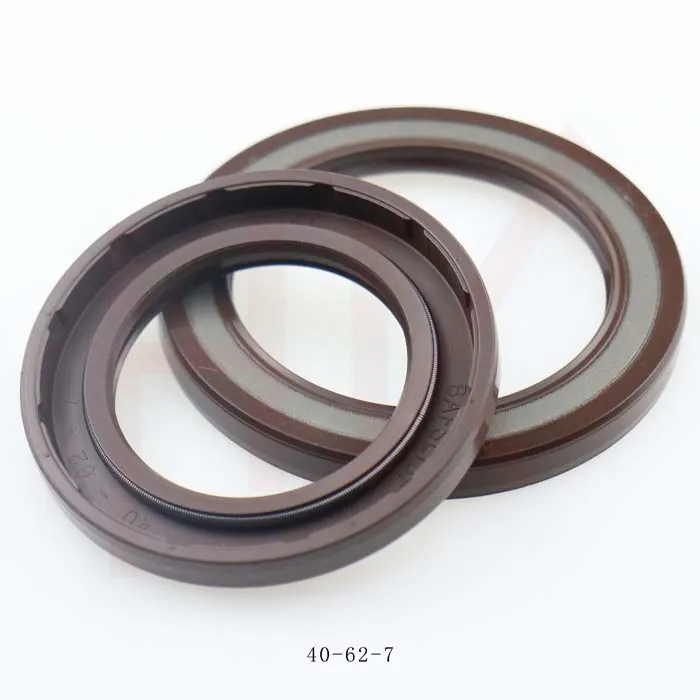ಡಿಸೆ . 11, 2024 09:34 Back to list
Innovative Inner Hub Seal Design Enhancing Performance and Durability in Mechanical Systems
Understanding the Inner Hub Seal Its Importance and Functionality in Mechanical Systems
In the realm of mechanical engineering, the inner hub seal plays a pivotal role in ensuring the efficient operation of various machines and vehicles. It is a critical component that has gained attention due to its influence on performance, longevity, and maintenance of mechanical systems, particularly in automotive and industrial applications. This article explores the functionality, significance, and maintenance of the inner hub seal, elucidating why it deserves particular focus during the design and maintenance of machinery.
What is an Inner Hub Seal?
The inner hub seal is a type of sealing device located within a wheel hub assembly, primarily used in vehicles and machinery. Its primary function is to prevent the ingress of contaminants such as dirt, moisture, and debris into the hub area while retaining lubrication within. This is crucial because the hub assembly houses bearings and other components responsible for wheel rotation, which can be severely affected by external contaminants.
Importance of the Inner Hub Seal
1. Protection Against Contaminants One of the primary roles of the inner hub seal is to act as a barrier against environmental contaminants. Dirt, dust, water, and other foreign particles can damage the delicate components inside the hub assembly, leading to accelerated wear and potential failure. The seal’s ability to keep these contaminants at bay is vital for the longevity of both the seal and the machinery.
2. Retention of Lubrication Proper lubrication is essential for the smooth operation of any mechanical system. The inner hub seal helps retain lubricant within the hub assembly, ensuring that the bearings and other moving parts remain properly lubricated. This reduces friction and wear, enhancing overall performance and extending the service life of the components involved.
3. Cost Efficiency By preventing damage and ensuring proper lubrication, inner hub seals contribute to reduced maintenance costs. Regularly replacing damaged seals can prevent more significant issues down the line, such as bearing failure, which can lead to expensive repairs and downtime. In this way, a good-quality inner hub seal can be seen as an investment in the reliability of the system.
inner hub seal

4. Noise Reduction The inner hub seal also plays a role in minimizing noise generated by the movement of rotating parts. A well-functioning seal can dampen vibrations and reduce the overall noise levels associated with mechanical operations, leading to a more pleasant user experience, especially in automotive applications.
Types of Inner Hub Seals
Inner hub seals come in various designs and materials, each tailored for specific applications and performance requirements. Common types include rubber seals, polyurethane seals, and metal lip seals. The choice of material affects the seal's durability, resistance to temperature variations, and ability to withstand different types of motor oil or lubricants.
Maintenance of Inner Hub Seals
Maintaining the integrity of the inner hub seal is crucial for ensuring the long-term functionality of mechanical systems. Regular inspection should be part of the routine maintenance checks in vehicles and machinery. Signs of wear may include visible cracks, deformation, or evidence of leakage. It is essential to replace seals at the first sign of damage to prevent complications later.
Conclusion
The inner hub seal may seem like a minor component in the grand scheme of mechanical systems, yet its importance cannot be overstated. By safeguarding against contaminants, retaining lubrication, reducing noise, and contributing to cost efficiency, it plays a critical role in the performance and reliability of machinery. Understanding its functionality and ensuring proper maintenance can significantly enhance the lifespan and effectiveness of various mechanical systems. In an industry where precision and reliability are paramount, paying attention to seemingly small components like the inner hub seal can lead to substantial benefits in the long run.
-
TCN Oil Seal Metal Ring Reinforcement for Heavy Machinery
NewsJul.25,2025
-
Rotary Lip Seal Spring-Loaded Design for High-Speed Applications
NewsJul.25,2025
-
Hydraulic Cylinder Seals Polyurethane Material for High-Impact Jobs
NewsJul.25,2025
-
High Pressure Oil Seal Polyurethane Coating Wear Resistance
NewsJul.25,2025
-
Dust Proof Seal Double Lip Design for Construction Equipment
NewsJul.25,2025
-
Hub Seal Polyurethane Wear Resistance in Agricultural Vehicles
NewsJul.25,2025
-
The Trans-formative Journey of Wheel Hub Oil Seals
NewsJun.06,2025
Products categories
















